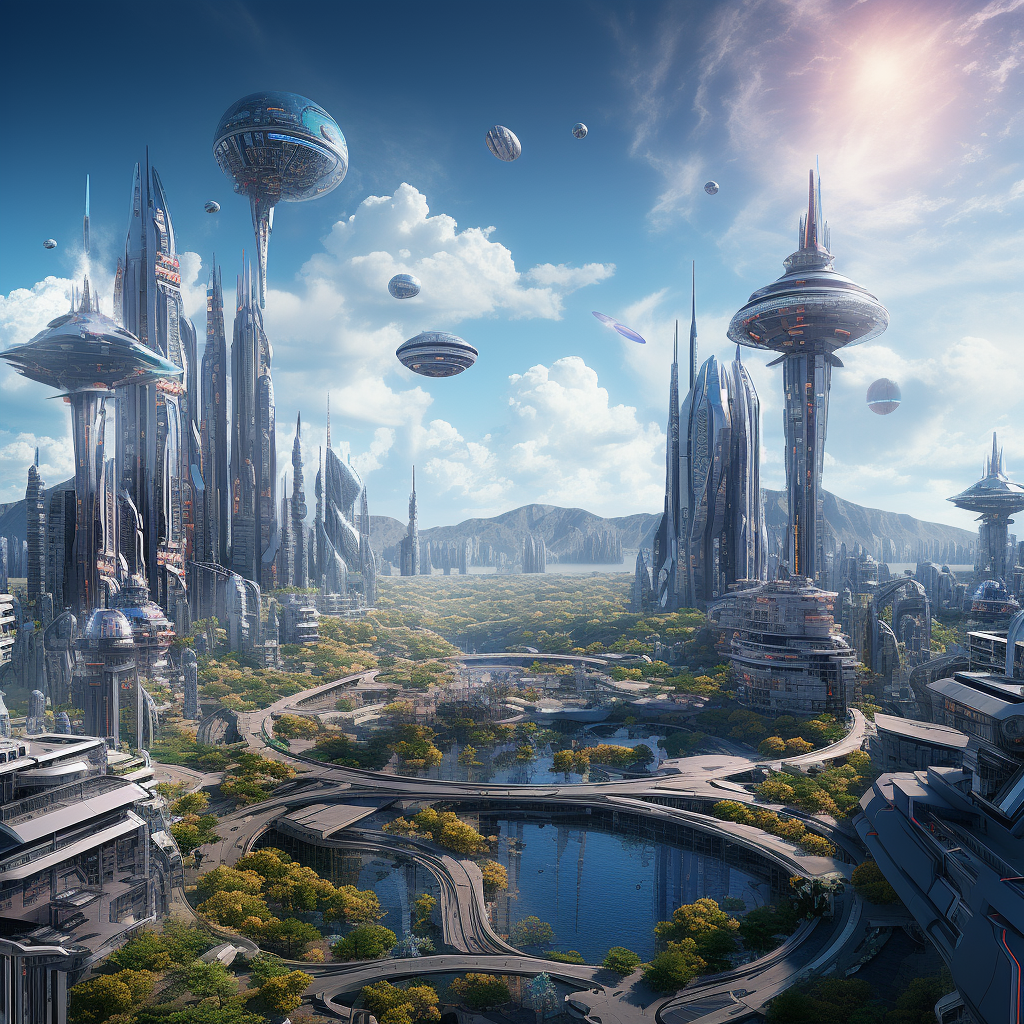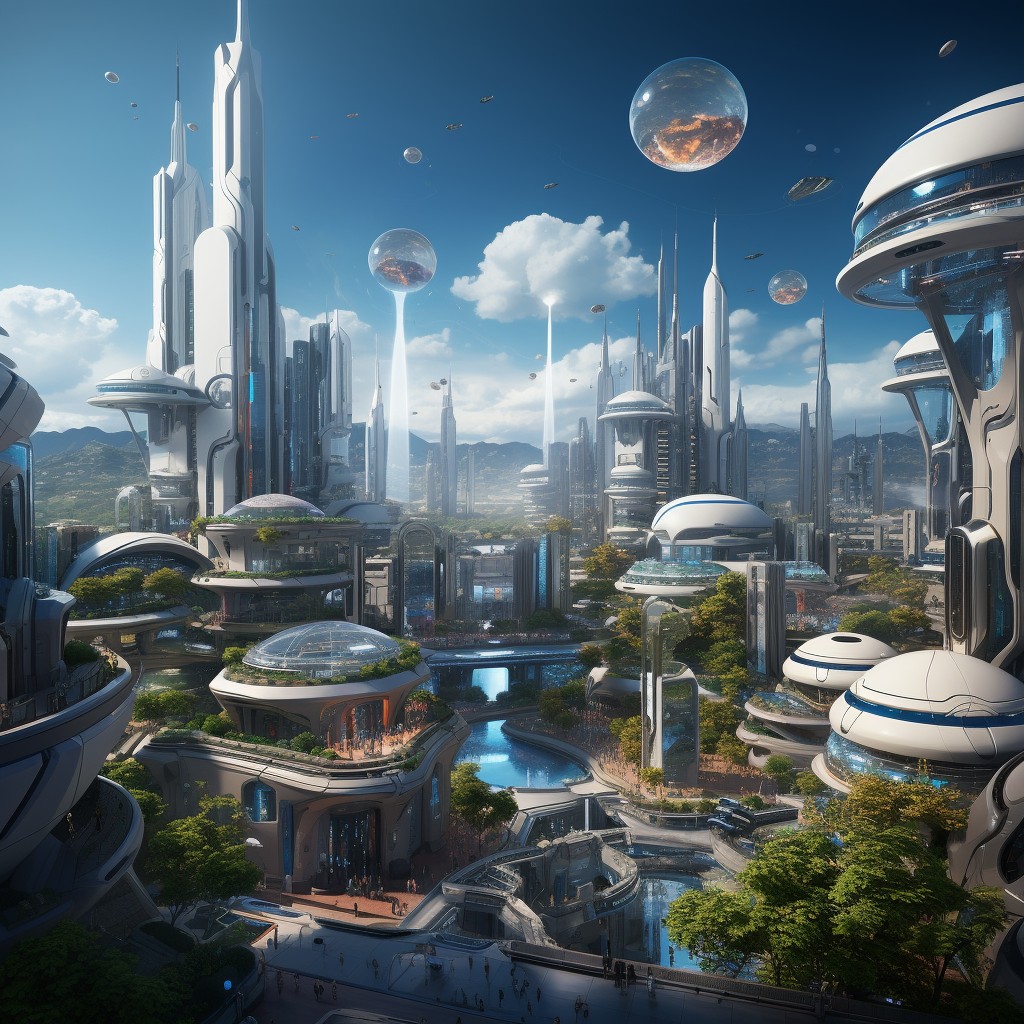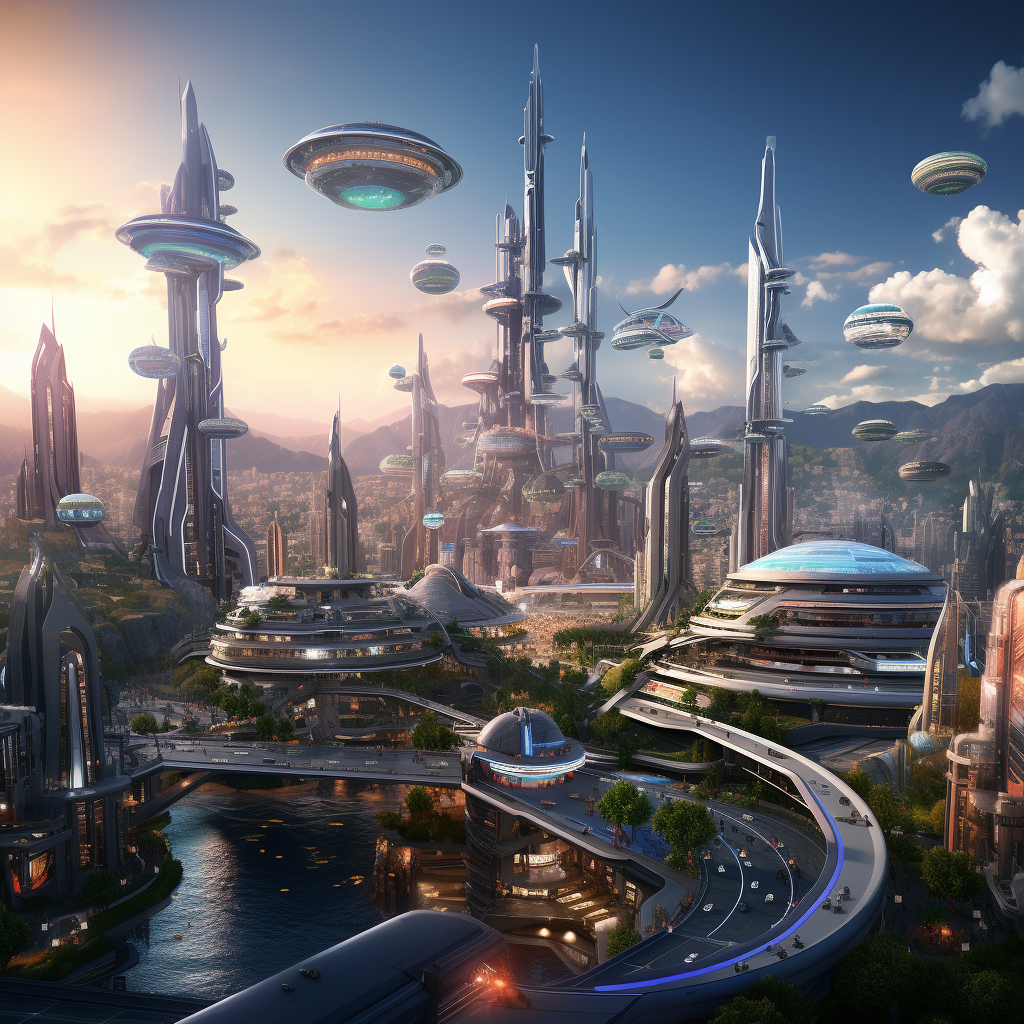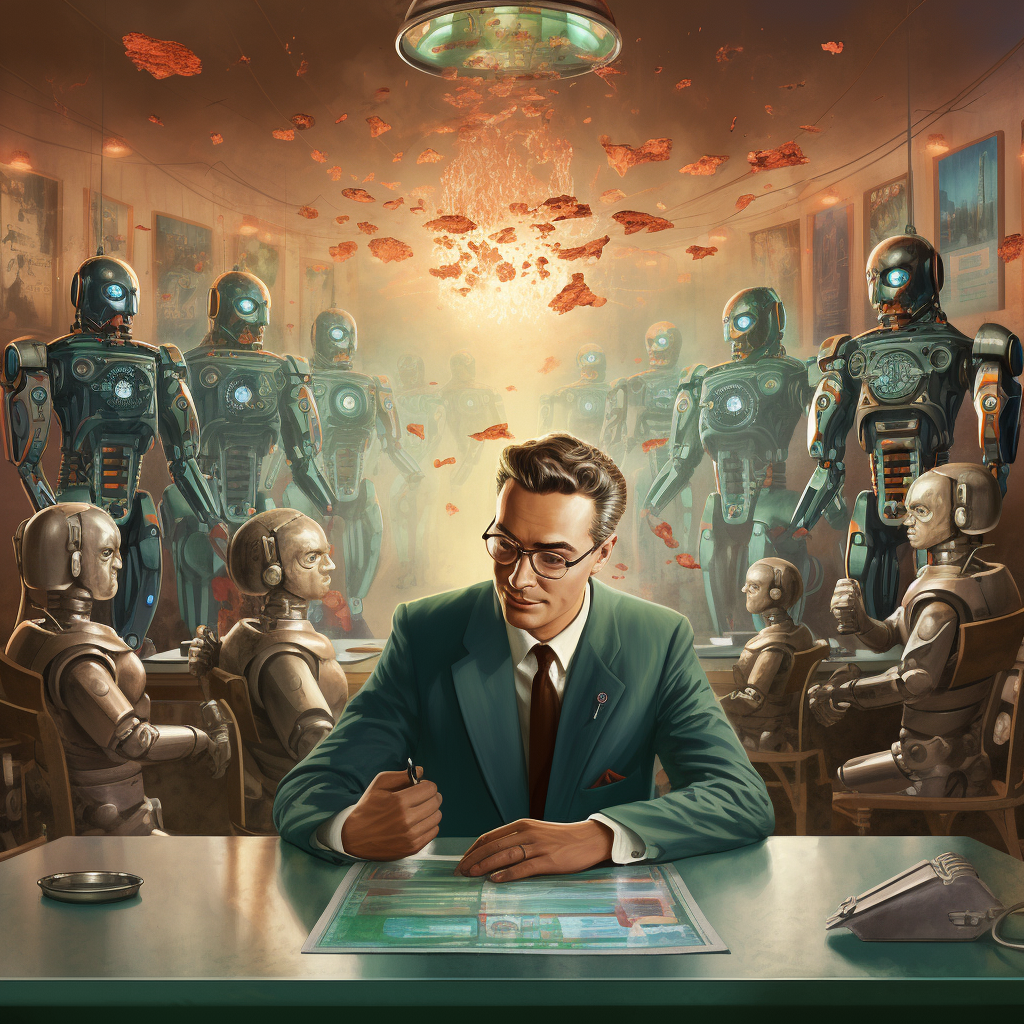Introduction
Artificial Intelligence, often abbreviated as AI, stands as a testament to mankind’s quest to develop machines that can mimic human intelligence. It amalgamates algorithms, computational methodologies, and advanced data analytics to allow machines to perform tasks traditionally requiring human thought.
Artificial Intelligence, commonly referred to as AI, is often portrayed in movies and TV shows as robots with human-like characteristics. While that’s a thrilling portrayal, the real world of AI is equally captivating, albeit a bit different. At its core, AI is about creating machines that can think intelligently, much like humans. Imagine a computer program that can recognize a cat in a photo, or a virtual assistant that can set an alarm for you—these are just basic examples of AI at work.
Historically, the seeds of AI were sown in ancient history with myths of automatons, but the real groundwork began in the mid-20th century. By the 1950s, the dream of creating an intelligent machine became a tangible academic discipline. Fast forward to today, and AI is no longer just a subject of research. It’s everywhere: powering search engines, recognizing our faces, and even recommending what movie to watch next.
1. Definition of AI
AI is the study of how to create algorithms that can make decisions, learn from data, and mimic the cognitive functionalities of humans. It’s the underlying force behind innovations like chatbots, recommendation systems, and autonomous vehicles.
2. History and Evolution of AI
Starting from Alan Turing’s proposition – can machines think? – in the 1950s, AI has traveled a fascinating journey. Early AI was rule-based and limited to specific tasks. With time, as computational capacities expanded, AI started evolving, manifesting in chess-playing machines in the ’80s to Siri and Alexa now.
3. Components of AI
Several components give life to AI:
- Algorithms: Define how AI processes and makes decisions.
- Neural Networks: Allow AI to process vast arrays of interconnected data.
- Machine Learning (ML): Enables AI systems to learn and evolve from experience.
- Natural Language Processing (NLP): Powers AI’s language comprehension.
For example, ChatGPT, a model designed by OpenAI, exemplifies the application of these components. Dive deeper into its intricacies here.
4. Technologies Behind AI
Numerous technologies supercharge AI:
- TensorFlow & PyTorch: Mainstays for developing AI models.
- Robotics: Machines that operate autonomously.
- Data Analytics: The art and science of analyzing vast data to glean actionable insights.
- Cognitive Computing: Mirroring human cognitive functions in a machine.
5. Applications of AI
AI is transforming industries:
- Healthcare: Diagnosing diseases, predicting patient trajectories.
- Entertainment: Netflix’s content recommendations or Spotify’s music suggestions.
- Education: Personalized learning experiences and AI-assisted studying. Students are harnessing AI, like ChatGPT, to enhance their academic journey.
6. Ethics in AI
Navigating the AI landscape requires an ethical compass:
- Bias: Machines learn from data. If data carries biases, the AI too will.
- Privacy: Striking a balance between personalization and intrusiveness.
- Accountability: Who’s to blame if AI makes a mistake?

7. Challenges in AI
Despite its promise, AI confronts challenges:
- Data Integrity: Garbage in, garbage out. Quality data is paramount.
- Complex Decision Making: Sometimes, even AI’s decisions baffle experts.
- Ethical Dilemmas: Who’s watching the machines?
8. The Future of AI
The AI tapestry is yet to be fully woven. The future might behold self-healing machines, AI-driven medical diagnoses, or even AI-authored literature. Combining AI with emerging technologies, like quantum computing, might redefine what’s possible.







9. Pros and Cons of AI
Pros:
- Efficiency: Machines don’t tire.
- Data Handling: Analyzing vast datasets quickly.
- Cost-Efficiency: Over time, machines are cheaper than human labor.
Cons:
- Job Displacement: Automation might phase out certain jobs.
- Over-reliance: Overdependence on machines can be perilous.
- Loss of Human Touch: Machines lack empathy.
For instance, while tools like ChatGPT can help draft professional letters, the human touch and personalized nuances might be missed.
10. Conclusion
Artificial Intelligence isn’t just another tech buzzword; it’s a paradigm shift. It’s reshaping industries, from healthcare to entertainment, and redefining norms. As we stand on the brink of this AI-driven epoch, one can only wonder, with bated breath, what the future holds.
Frequently Asked Questions (FAQs)
Artificial Intelligence (AI) refers to the simulation of human intelligence in machines that are programmed to mimic human thought processes. This can include problem-solving, learning, planning, and more. Today, AI can categorize various forms of data faster and more accurately than a human.
While AI is a broad concept of machines being able to perform tasks in a way we’d consider “smart,” Machine Learning is a subset of AI that involves feeding machines data and allowing them to learn for themselves.
AI is viewed as a revolutionary technology because of its potential to automate routine tasks, provide data-driven insights, and allow companies to offer more personalized experiences to their customers. With AI, machines can process and analyze vast amounts of data with incredible speed and accuracy.
AI, especially machine learning models, rely on large sets of data. This data is used to train models, allowing them to make predictions or decisions without being explicitly programmed to perform the task. The quality and quantity of the data directly influence the performance of the AI system.
Natural Language Processing (NLP) is a subset of AI that focuses on enabling machines to understand, interpret, and generate human language in a way that is both meaningful and useful. Chatbots, like ChatGPT, utilize NLP to understand user inputs and generate appropriate responses.
From smartphone voice assistants to recommendation systems on streaming platforms, AI impacts various aspects of our daily lives. Other applications include facial recognition, email filtering, and customer support chatbots.
The concept of AI surpassing human intelligence is known as the “singularity.” While some believe it’s possible, others argue that AI lacks human qualities like consciousness, emotions, and intuition. Regardless, the debate continues.
AI ethics revolves around ensuring AI technologies are developed and used responsibly. This can involve issues like bias in AI algorithms, transparency in decision-making processes, and the potential misuse of AI in surveillance and warfare.
While AI can automate certain repetitive tasks and might lead to job displacement in some sectors, it can also create new job opportunities and industries. The key is to ensure continuous learning and upskilling in the workforce.
No, AI is not infallible. Like any technology, AI can make mistakes, especially if the data it was trained on is flawed or biased. It’s essential to use AI as a tool and always scrutinize its outputs.
The Internet of Things (IoT) refers to the network of physical devices connected to the internet. When combined with AI, these devices can collect data and make intelligent decisions autonomously. For example, a smart thermostat can learn a user’s patterns and adjust settings to save energy.
While AI systems are designed to be efficient and accurate, their safety can be compromised if they’re trained on biased data or if they’re used inappropriately. Proper guidelines, ethical considerations, and oversight are necessary to ensure the safe application of AI.
Skills in programming, data analytics, machine learning, neural networks, and deep learning are essential in the AI field. Soft skills like problem-solving, creativity, and critical thinking are also crucial.
The surge in interest in AI is due to the vast amounts of data now available, improvements in computational power, and advancements in machine learning algorithms. These factors have made it feasible to apply AI in real-world applications more than ever before.
AI-powered chatbots can offer 24/7 support, instant responses, and personalized interactions based on user data. They can handle multiple queries simultaneously, ensuring users don’t have to wait. As seen in [this article](https://stage.trionxai.com/how-chatgpt-can-make-your-life-better/), ChatGPT can significantly improve user experiences by offering tailored responses.
Data privacy is a significant concern in AI. AI systems require vast amounts of data for training, and it’s essential to ensure this data is handled responsibly, without compromising user privacy. Regulations like GDPR in Europe are set to protect user data and ensure it’s not misused.
AI can help businesses improve efficiency, reduce costs, and enhance customer experiences. From automating routine tasks to offering personalized marketing strategies, AI has the potential to revolutionize the way businesses operate. For insights on using AI tools like ChatGPT for professional tasks, refer to [this guide](https://stage.trionxai.com/write-a-professional-cover-letter-using-ai-and-chatgpt/).
AI systems are only as good as the data they are trained on. They can sometimes be biased, make incorrect predictions, or be susceptible to adversarial attacks. Also, they lack human qualities like common sense, emotions, and moral reasoning.
AI can generate content, but it doesn’t truly “create” in the way humans do. AI models like ChatGPT can write articles, compose music, or create art based on their training data. However, they don’t have emotions, intentions, or consciousness, so their “creativity” is a result of algorithms and patterns. For more on ChatGPT’s capabilities, see [this overview](https://stage.trionxai.com/understanding-openai-and-chatgpt/).
Students can benefit from AI in various ways, from personalized learning to assistance with homework. For instance, ChatGPT can help students with writing assignments as highlighted in [this article](https://stage.trionxai.com/how-to-write-an-assignment-essay-using-chatgpt/). Other tools and platforms also offer AI-powered quizzes, content recommendations, and more.
Midjourney is often used in the context of AI as a tool to visualize AI-generated content. It can turn text-based prompts into images, helping in visual representation of AI outputs. For specific examples of how Midjourney functions with AI prompts, you can refer to [this guide](https://stage.trionxai.com/what-is-midjourney-examples-of-midjourney/).





